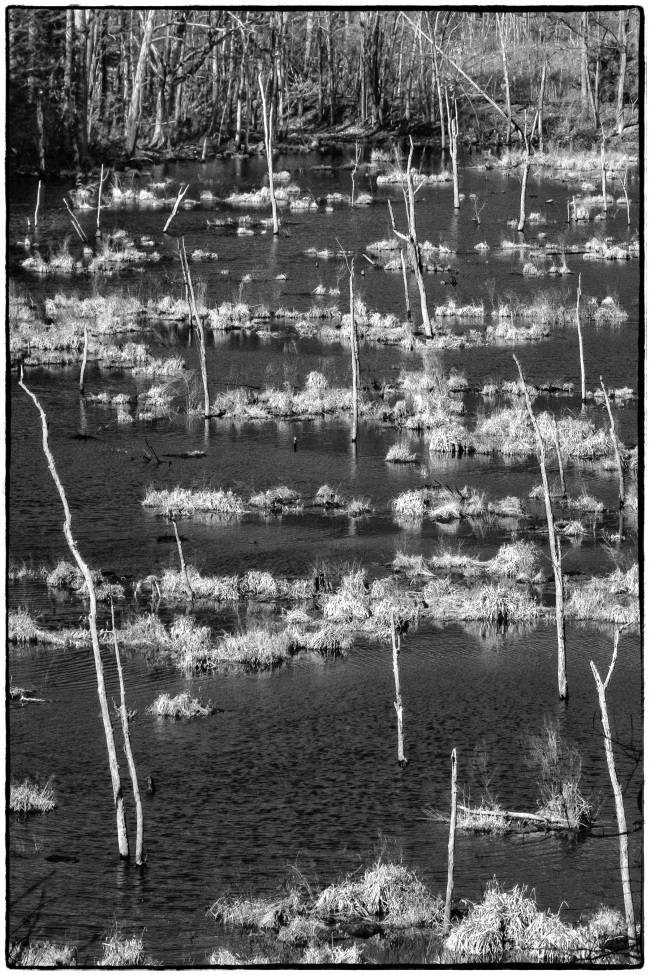After I’d taken this picture I browsed around on the internet to find out what this body of wetland actually was. I couldn’t find a name for it, but in my search I discovered that there’s a difference between a marsh and a swamp, something I’d never given much thought to before.
This particular stretch of wetland was billed as a marsh. But is it? It seems the difference is largely the presence of trees that can thrive with their roots in water such as mangrove, cypress and cedar i.e. a swamp has them and a marsh doesn’t. At first I thought this was a swamp because it had trees. But looking at it more closely I see that ‘had’ is the operative word. All the trees I can see in the water are dead. They weren’t adapted to survive in water. So I guess it is a marsh after all.
In fact it’s worse than I thought. I looked further and came across this four part classification for wetlands:
Marsh. Marshes are fed by groundwater or surface water. Marshes are dominated by soft-stemmed vegetation. Marshes are pH neutral and, therefore, are abundant with plants and animals. Marshes can be freshwater or saltwater, tidal or inland. Other common names for marshes may include: prairie potholes, wet meadows, vernal ponds.
Swamp. Swamps are dominated by woody-plants that can tolerate a rich, organic soil covered in standing water. This may include trees such as cypress, cedar, or mangrove. Swamps may also be dominated by shrubs such as the buttonbush. Swamps are fed by groundwater of surface water.
Fen. Fens are peat-forming wetlands and are fed by nearby drainage, such as streams or rivers. Fens are high in nutrients with low acidic water. Fens are characterized by grasses, wildflowers and sedges. Often parallel fens adjacent to one another will eventually create a bog.
Bog. Bogs are fed by precipitation and do not receive water from nearby runoff, such as streams or rivers. Bogs are dominated by a spongy peat deposit and the floor is usually covered in sphagnum moss. Bogs have acidic water and are low in nutrients making them a difficult place for plants to thrive.
Beach Chair Scientist. A quick lesson in wetland ecology.
This is all getting a bit complicated for me so I’m going to stick with marsh.
When I think of swamps I think of the southern US so it occurred to me that perhaps swamps are more of a southern rather than northern phenomenon. So I looked further and to my surprise found this: “The Great Swamp in eastern Putnam and Dutchess counties is one of the largest wetlands in the U.S. State of New York. It turns out that this is about a 30 minute drive from where I live. You learn something new all the time!

